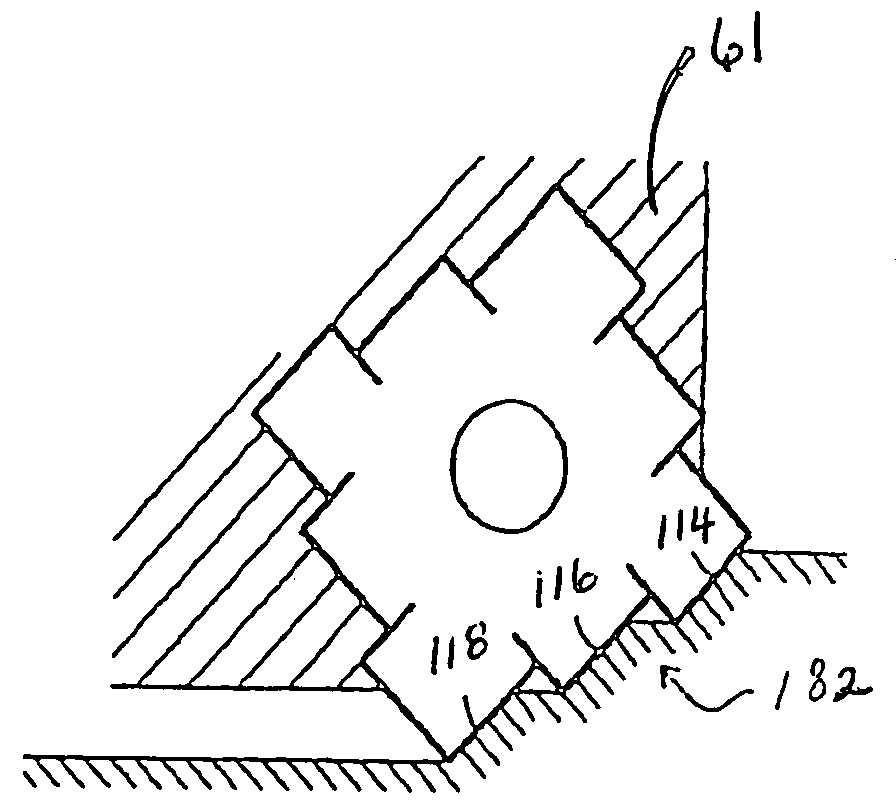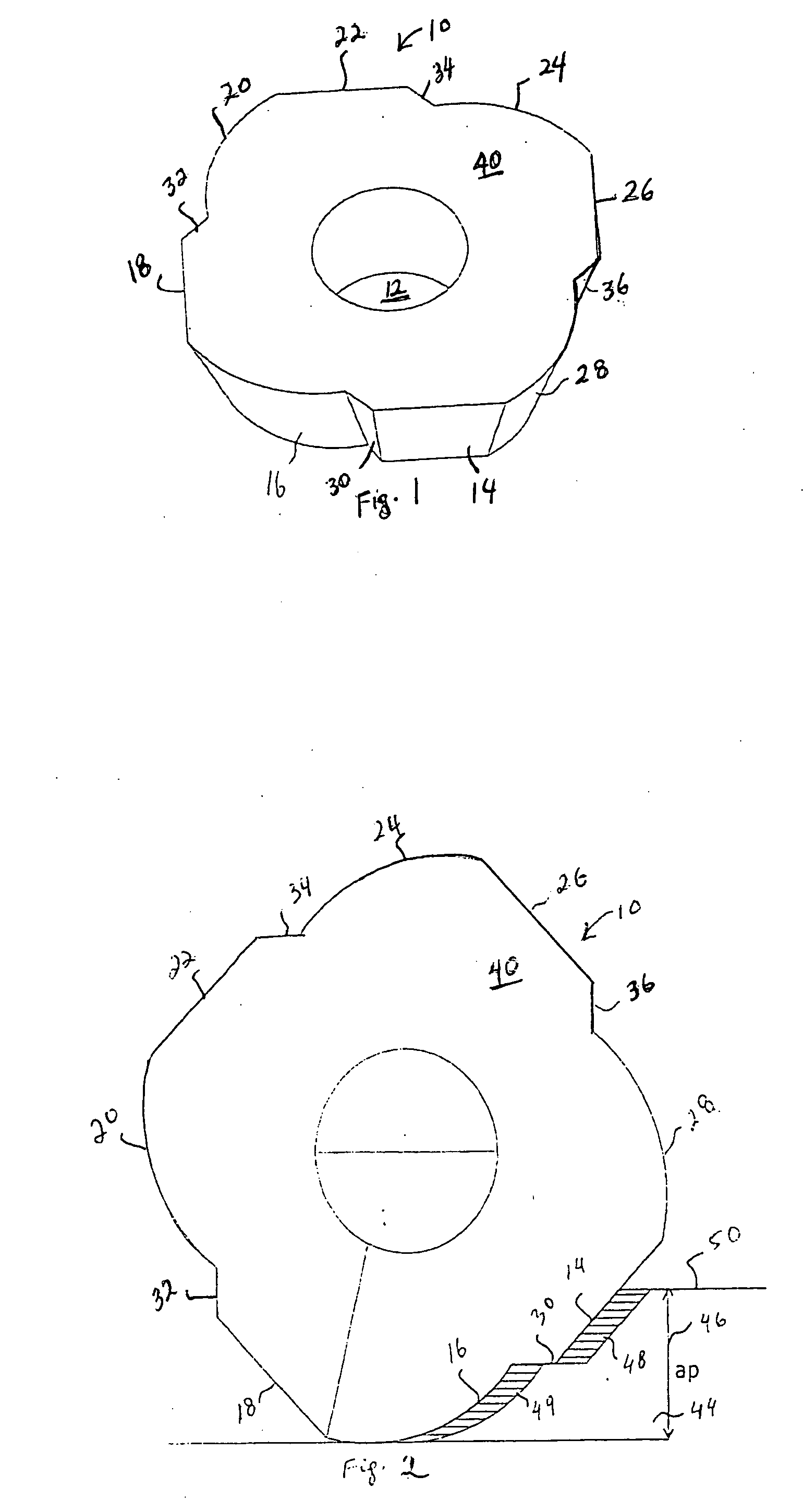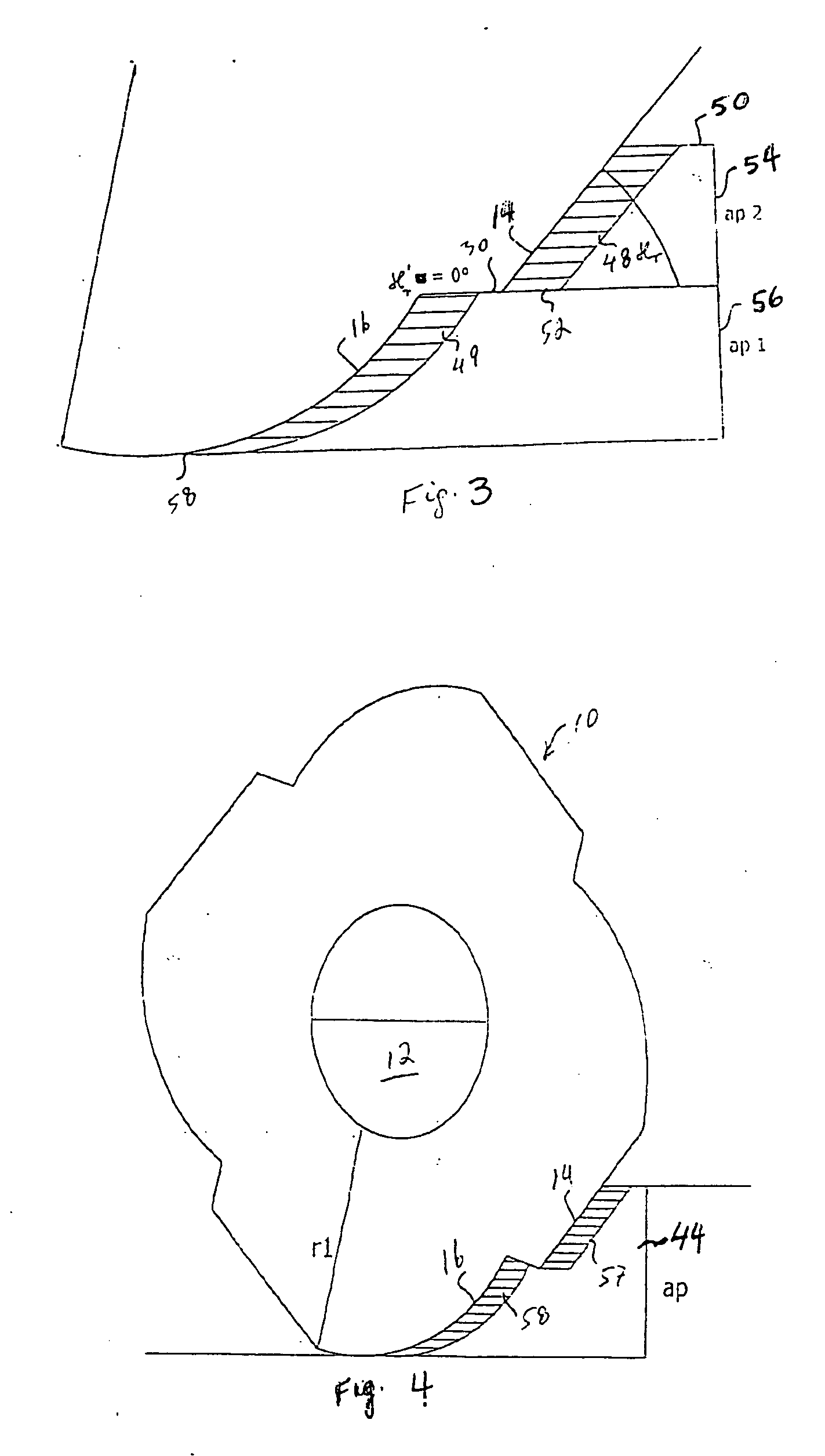Cutting tool
- Summary
- Abstract
- Description
- Claims
- Application Information
AI Technical Summary
Benefits of technology
Problems solved by technology
Method used
Image
Examples
first embodiment
[0034] Turning now to the drawings in more detail, numeral 10 designates a cutting tool body in accordance with the present invention. The cutting tool, or indexable tip body 10, is formed as an irregularly-shaped body. The cutting body is a solid body with four sides and eight cutting planes designated by numerals 14, 16, 18, 20, 22, 24, 26, and 28. The planes 14, 18, 22, and 26 are flat surfaces which are integrally connected to the adjacent rounded planes 6, 20, 24, and 28 by inclined connecting surfaces 30, 32, 34, and 36.
[0035] The cutting body 10 has a top, generally flat surface 40 and a bottom, generally flat surface 42. The surfaces 40 and 42 provide vertical limits to the extension of the cutting planes 14, 16, 18, 20, 22, 24, 26, and 28. In operation, the tip 10 is clamped on a milling head in a conventional manner, and the central opening 12 facilitates this step.
[0036] As shown in FIGS. 2 and 3, a work piece 44 is being cut by the cutting planes of the cutting body 10....
second embodiment
[0041] Turning now to the second embodiment shown in FIGS. 6-14, the cutting body 60 is shown to have four sides and a central opening 62. The central opening 62, similarly to the opening 12, is adapted to facilitate clamping of the body 60 on a milling head 61 (FIG. 8). Each side of the cutting tool body 60 has three irregularly-shaped blocks that have cutting edges. There are a total of eight blocks 64, 66, 68, 70, 72, 74, 76 and 78, which are attached to each other. Each side 80, 82, 84 and 86 of the body 60 has three blocks.
[0042] With reference to the side 80, the blocks 64, 66 and 68 have respective staggered top surfaces 94, 96 and 98 and staggered vertical planes 104, 106 and 108. The body 60 has a bottom, non-cutting surface 63 (FIGS. 9 and 10). A line of connection between the vertical surface 104 and the top surface 94 forms a cutting edge 114; the line of connection between the plane 106 and the top surface 96 forms a second cutting edge 116; and the line of connection b...
third embodiment
[0053] Turning now to FIGS. 15—18, the cutting body 60 has four sides, each with four cutting edges, such as edges 152, 154, 156 and 158 identified in FIGS. 15-18. The cutting planes, or edges 152, 154, 156 and 158 are connected by inclined connecting planes 160, 162 and 164. The three other sides of the body 60 is similarly provided with four cutting planes, which are connected to adjacent cutting planes by inclined surfaces.
[0054]FIG. 15 illustrates position of the body 60 engaging a work piece 166 with four cutting surfaces that form cutting edges along the areas of contact between the body 60 and the work piece 166. In this embodiment, the cutting tool creates four unequal length splinters 170, 172, 174, and 176. The profiles of the splinters differ from a conventional one piece profile that would extend roughly from a top surface 150 to the bottom surface 182 of the work piece 166. As can be better seen in FIG. 16, the length of the splinters can vary, depending on the geometry...
PUM
| Property | Measurement | Unit |
|---|---|---|
| Length | aaaaa | aaaaa |
| Time | aaaaa | aaaaa |
| Force | aaaaa | aaaaa |
Abstract
Description
Claims
Application Information
 Login to View More
Login to View More - R&D
- Intellectual Property
- Life Sciences
- Materials
- Tech Scout
- Unparalleled Data Quality
- Higher Quality Content
- 60% Fewer Hallucinations
Browse by: Latest US Patents, China's latest patents, Technical Efficacy Thesaurus, Application Domain, Technology Topic, Popular Technical Reports.
© 2025 PatSnap. All rights reserved.Legal|Privacy policy|Modern Slavery Act Transparency Statement|Sitemap|About US| Contact US: help@patsnap.com



